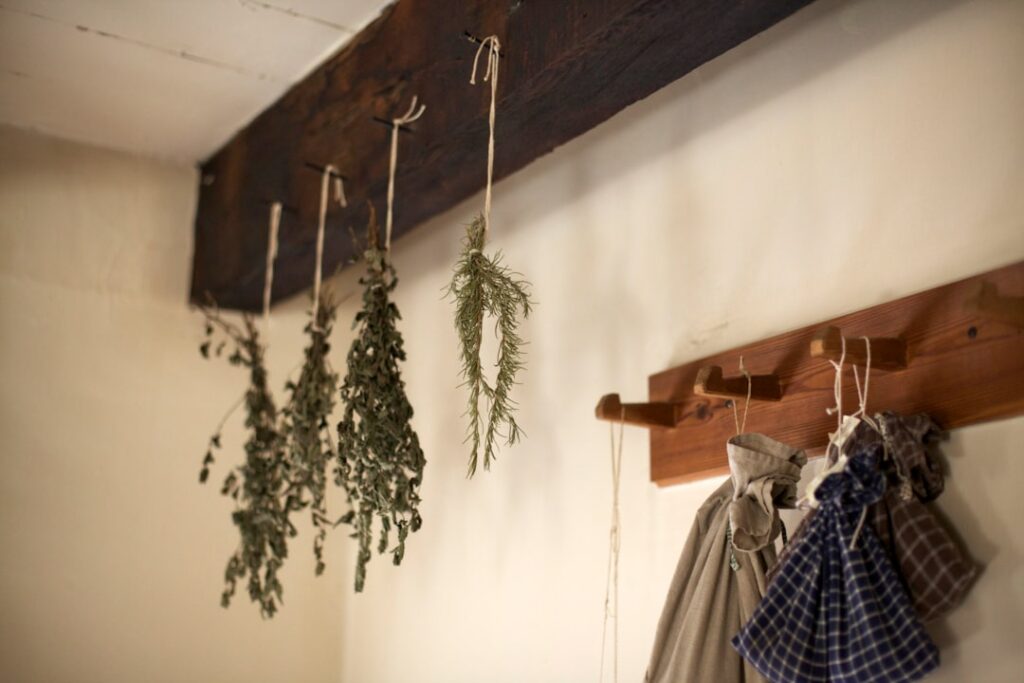There’s a special kind of magic in stepping outside to snip fresh herbs for dinner. That burst of summer rosemary, basil, or thyme feels like sunshine on a plate. But as the season wanes, the thought of losing that fresh flavor can be a little sad. What if you could bottle that sunshine for the colder months? Good news: you can, and it’s way easier than you think.
The art of drying herbs is surrounded by myths that make it seem like a complicated, scientific process. Let’s be honest, nobody has time for that. Today, we’re going to bust a few of those common myths and show you just how simple it is to keep your pantry stocked with homegrown flavor all year long.
Myth #1: You Need a Fancy, Expensive Dehydrator
This is the biggest barrier for most people. We see fancy gadgets and assume they’re essential. While a food dehydrator is certainly an effective tool, it is absolutely not a requirement. For centuries, people have preserved herbs with the most sophisticated technology available: a bit of string and a warm, dry spot.
The Truth: The best method is often the simplest. Air-drying is a time-honored technique that perfectly preserves the flavor and essential oils of most sturdy herbs like rosemary, thyme, oregano, sage, and mint.
- How to do it: Gather your herbs into small, loose bundles—think a bouquet you can comfortably circle with your thumb and index finger. Secure the stems with twine or a rubber band. Hang them upside down in a warm, dry, well-ventilated area away from direct sunlight, which can bleach the leaves and sap their flavor. A corner of your kitchen, a pantry, or even a covered porch works beautifully. In 1-3 weeks, you’ll have perfectly dried herbs.
For more delicate, high-moisture herbs like basil, cilantro, or parsley, you can use your oven. Just spread the leaves in a single layer on a baking sheet and set your oven to its lowest possible temperature (ideally under 180°F / 82°C). Prop the door open slightly to allow moisture to escape and check on them every 20-30 minutes.
Myth #2: Microwaving is a Great Shortcut
In our quest for efficiency, the microwave seems like a logical hack. It’s fast, right? Unfortunately, this is one shortcut you’ll want to skip.
The Truth: Microwaving doesn’t just dry the herbs; it cooks them. The intense, fast heat destroys the delicate volatile oils that give herbs their distinctive aroma and taste. You’ll be left with brittle, brownish, and bland leaves. The best methods are slow and gentle, allowing the water to evaporate while keeping the flavor intact. Patience is your best ingredient here.
Myth #3: You Must Wash All Your Herbs Before Drying
We’re taught to wash all our produce, so it makes sense to give your herbs a good rinse before preserving them. However, this can sometimes do more harm than good.
The Truth: The number one enemy of successful herb drying is mold. Adding water right before you try to remove it is counterproductive. If you’re harvesting from your own organic garden and the herbs are clean, a gentle shake to dislodge any dirt or tiny insects is all you need. The best time to harvest is mid-morning, after the dew has evaporated but before the sun gets too hot.
If your herbs are a bit dusty or you’re unsure of their source, a very light rinse is okay. The key is to get them completely dry afterward. Gently pat them between layers of paper towels or give them a whirl in a salad spinner before you begin the drying process.
Myth #4: The Bigger the Bundle, the Better
When you’re gathering your herbs to air-dry, it’s tempting to create a big, beautiful, rustic-looking bundle. It looks great on Instagram, but it’s not great for your herbs.
The Truth: Air circulation is critical. A large, tightly packed bunch traps moisture in the center, creating the perfect environment for mold and mildew to grow. This will ruin your entire harvest. Instead, stick to small, airy bundles. Good airflow ensures every leaf and stem dries evenly and efficiently.
Myth #5: Once They’re Dry, Just Crumble and Store
You did it! Your herbs are crispy and dry. The final step is just to crush them up and toss them in a jar, right? Not so fast. How you store them is just as important as how you dried them.
The Truth: For maximum potency, store your dried herb leaves whole. The flavor is locked inside the leaves, and crushing them releases those precious oils. Once released, they begin to fade. By keeping the leaves whole and crushing them with your fingers right before you use them, you’ll get a much more potent and aromatic flavor in your cooking.
Store them in an airtight container (a small glass jar is perfect) in a cool, dark, and dry place. A pantry or cupboard is ideal—avoid storing them on a spice rack above your stove, where heat and light will quickly degrade their quality.
By letting go of these myths, you can see that preserving the taste of summer is one of the easiest and most rewarding kitchen projects. Go ahead, give it a try. Your winter soups and stews will thank you for it!
Photo by Allie Dearie on Unsplash

